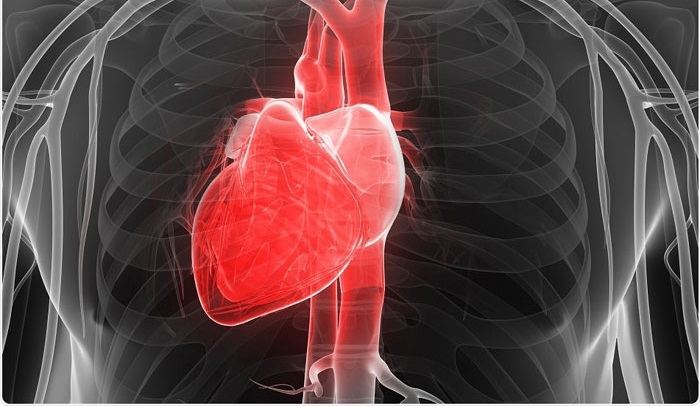Ischemic cardiomyopathy (ICM) is a serious condition that results from the weakening of the heart muscle due to inadequate blood flow, usually caused by coronary artery disease (CAD). Understanding the primary causes behind ICM is crucial for both prevention and management of this cardiovascular condition. This article delves into the intricacies of these causes, exploring their mechanisms, impacts, and implications for clinical practice.
5 Major Causes of Ischemic Cardiomyopathy
1. Coronary Artery Disease (CAD)
Coronary artery disease stands as the foremost cause of ischemic cardiomyopathy. It develops when the coronary arteries, responsible for supplying oxygen-rich blood to the heart muscle, become narrowed or blocked. This narrowing, often due to the buildup of cholesterol plaques, restricts blood flow and oxygen delivery to the heart.
see also: What Is Ventricular Systolic Dysfunction
Mechanism:
The process of atherosclerosis plays a pivotal role in CAD. Initially, damage to the arterial wall triggers an inflammatory response, leading to the accumulation of cholesterol, fatty deposits, and inflammatory cells. Over time, these plaques can rupture or become calcified, further obstructing blood flow. The resulting ischemia deprives the heart muscle of essential nutrients and oxygen, progressively weakening its ability to pump blood effectively.
Clinical Implications:
CAD not only predisposes individuals to acute events such as myocardial infarction (heart attack) but also sets the stage for chronic ischemic cardiomyopathy. Repeated episodes of ischemia and infarction contribute to myocardial damage and remodeling, ultimately leading to impaired cardiac function characteristic of ischemic cardiomyopathy.
2. Myocardial Infarction (Heart Attack)
A myocardial infarction occurs when a coronary artery becomes abruptly blocked, typically by a blood clot (thrombus), cutting off blood flow to a portion of the heart muscle. This ischemic insult results in damage or death of myocardial cells within the affected region.
Pathophysiology:
During a heart attack, the lack of oxygen and nutrients triggers cellular injury pathways, leading to myocardial necrosis. The extent and location of the infarction determine its impact on cardiac function. The surviving myocardium undergoes compensatory changes, but the resulting scar tissue may impair the heart’s contractile ability and overall performance.
Long-term Effects:
Even after successful treatment of a myocardial infarction, residual damage and remodeling processes can contribute to the development of ischemic cardiomyopathy. The compromised cardiac function post-infarction increases susceptibility to heart failure and other cardiovascular complications over time.
3. Chronic Hypertension (High Blood Pressure)
Chronic hypertension exerts significant stress on the heart by forcing it to pump against elevated pressure within the arteries. This sustained pressure overload leads to structural changes in the heart muscle, known as hypertrophy, as it adapts to meet increased demands.
Mechanisms of Injury:
Persistent hypertension causes endothelial dysfunction and vascular remodeling, predisposing arteries to atherosclerosis and reducing coronary perfusion. The hypertrophied myocardium becomes stiffer and less compliant, impairing its ability to relax and fill adequately during diastole. Over time, these changes contribute to myocardial ischemia and progressive myocardial dysfunction.
Clinical Implications:
Hypertensive heart disease is a common precursor to ischemic cardiomyopathy. The chronic pressure overload and subsequent myocardial remodeling increase the heart’s oxygen demand while compromising its oxygen supply, accelerating the progression towards heart failure and ischemic cardiomyopathy.
4. Diabetes Mellitus
Diabetes mellitus, particularly when poorly controlled, significantly increases the risk of developing ischemic cardiomyopathy. The metabolic abnormalities associated with diabetes contribute to vascular damage and accelerate the development of atherosclerosis in the coronary arteries.
Pathogenic Pathways:
Hyperglycemia in diabetes promotes oxidative stress, inflammation, and endothelial dysfunction—all critical factors in the initiation and progression of atherosclerosis. Insulin resistance and dyslipidemia further exacerbate vascular pathology, increasing the likelihood of coronary artery disease and subsequent ischemic cardiomyopathy.
Impact on Cardiac Function:
Beyond its role in promoting atherosclerosis, diabetes directly affects myocardial function. Diabetic cardiomyopathy, characterized by myocardial fibrosis, impaired contractility, and diastolic dysfunction, contributes to the overall burden of ischemic cardiomyopathy.
Managing diabetes effectively is essential to mitigate these cardiovascular risks.
5. Smoking and Tobacco Use
Smoking and tobacco use pose significant cardiovascular risks, primarily through their detrimental effects on vascular health and coronary artery function. The chemicals in tobacco smoke promote endothelial dysfunction, accelerate atherosclerosis, and increase the propensity for thrombotic events.
Vascular Consequences:
Nicotine and other toxins in tobacco smoke induce vasoconstriction and systemic inflammation, promoting the formation of atherosclerotic plaques and narrowing coronary arteries. These changes reduce myocardial perfusion and predispose individuals to ischemic events such as myocardial infarction.
Cardiotoxic Effects:
Smoking-related cardiovascular damage extends beyond atherosclerosis. Chronic exposure to tobacco smoke exacerbates hypertension, worsens diabetic vascular complications, and contributes to the development of myocardial fibrosis and dysfunction. These cumulative effects heighten the risk of ischemic cardiomyopathy and adverse cardiac outcomes.
Conclusion
Ischemic cardiomyopathy arises from a complex interplay of cardiovascular risk factors, with coronary artery disease standing as the predominant underlying cause. Understanding the mechanisms by which conditions such as CAD, myocardial infarction, hypertension, diabetes mellitus, and smoking contribute to myocardial ischemia and subsequent cardiac dysfunction is crucial for clinical management and preventive strategies. By addressing these modifiable risk factors through lifestyle modifications, pharmacotherapy, and timely interventions, healthcare providers can mitigate the progression of ischemic cardiomyopathy and improve patient outcomes in cardiovascular care.

